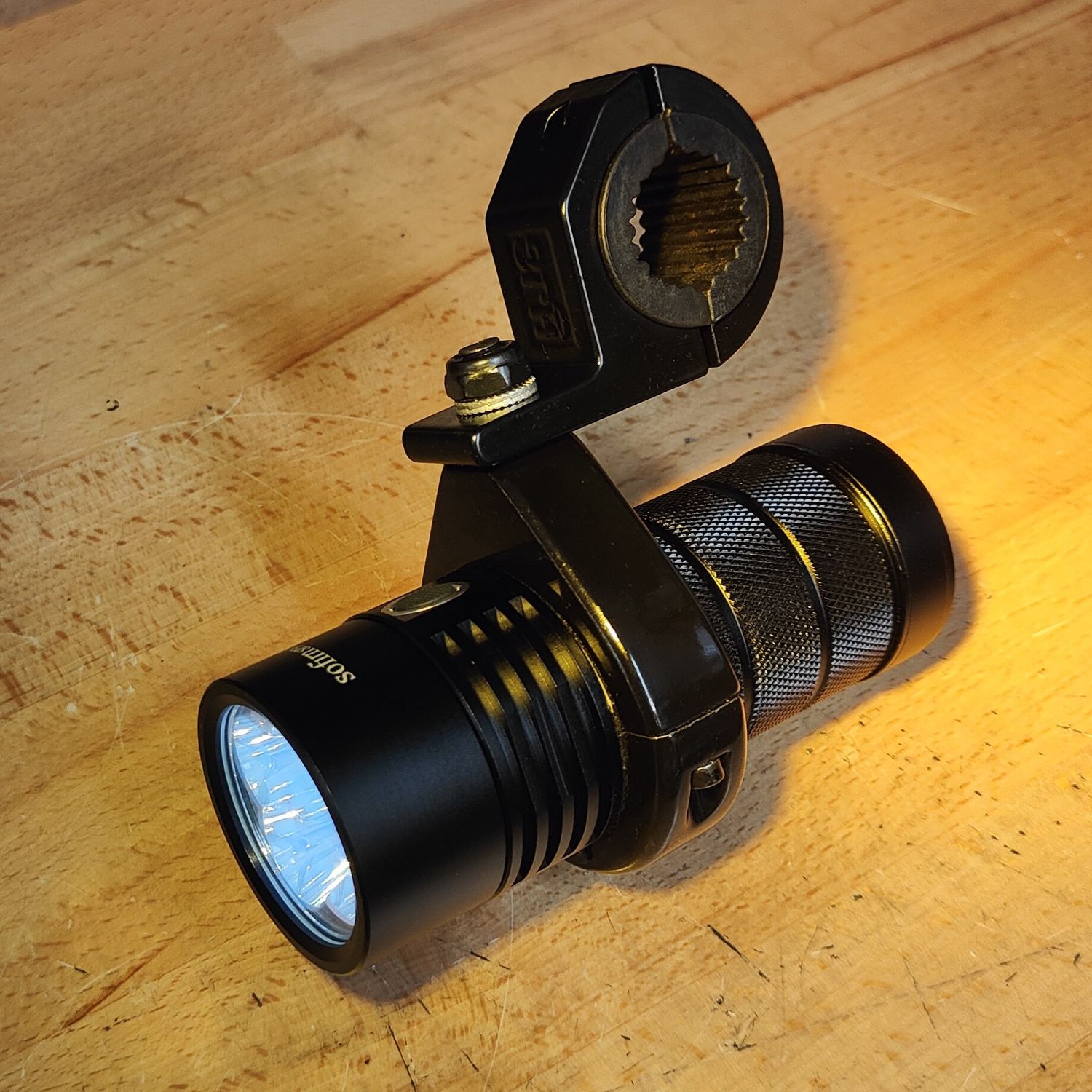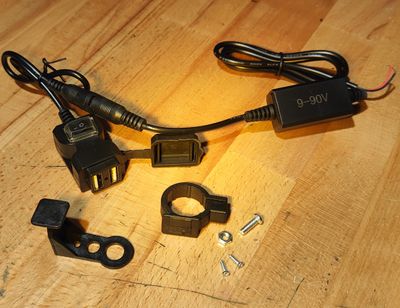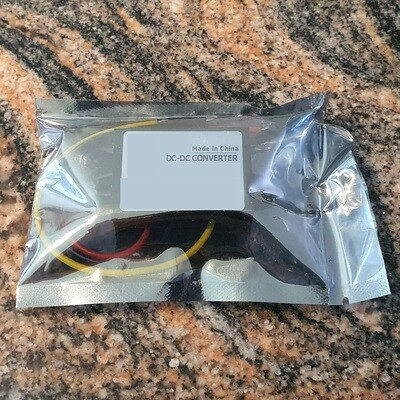Extensive online catalogue servicing new and existing Now Club members & trade/ABN | eSN2026#JP-CN | Group Ride Guide | On The Run Workshop |
TurboTorch Stonker 6000p/1125s/30Wh Headlight
5.0
1 review
Reviews from verified customers who have purchased products at this store.
SKU TURBOTORCH-6000/30+-STONKER-SP36R75
AU$118.18
Premium fixture with flexible mounting options
Fixture:
Mounting assembly - Scooter connect point
Mounting assembly - Fixture clamp
Optional 37.5mm Dichroic Filter
Optional hood
In stock: 1 available
1
Save this product for later
Customer reviews
Reviews only from verified customers
Reviews are only accepted from verified customers who have signed in and purchased the products. This ensures that each review is based on genuine customer experiences. All reviews are checked before publication to prevent spam.
Grayson O.
Box Hill North,
Australia
Oct 9, 2024
Very good light, works very well.
TurboTorch Stonker 6000p/1125s/30Wh Headlight
Product Details
Brand: TurboTorch featuring Sofirn
Product images on timber workbench and rear of Gold Wolf Warrior show type A and E brackets. The Mantis front handlebar, type A and E.
| Take your night ride to the next level with Stonker, the ideal light for spirited electric scooter night - sustaining an impressive 1000-1250 lumens for 3+ hours as a headlight, more with auxiliary battery. Stonker is one of Australia's best eScooter Headlight offerings on market - designed, hand assembled and QA'd locally with best-of-breed offshore components, purpose designed for electric scooter application/use. |
Check out the eScootNow Headlight Project Stonker Labs Facebook Group for more info including a series of episodes that explore and review Stonker concepts. |
Stonker lets you choose your fixture (can style torch) and various mounting bracket assembly options for the best fit to your eScooter - either on the handlebar or stem. Stonker is pre-assembled with custom length fitted bolts and fixture mounting is fitted prior to despatch with heatsink pads, fabric tape and rubber padding in all the right spots for DIY fitting.
Stonker is powered by three user replaceable internal 21700 battery cells (Sofirn fixtures are user removable). This represents around 3% of the capacity that would otherwise been discharged from a scooter battery (18Ah).
The Sofirn SP36-BLF offers industry-leading colour definition with impressive R90 Colour Rendering Index (CRI) with Samsung emitters that provide the best optics to visualise branches, stones and other path obstacles - this helps contrast objects such as dark brown sticks and dark green leaves on dark grey pavements.
Stonker features a convenient USB type-C port with fixtures supporting concurrent charge-and-operation at all brightness levels. This allows external battery to augment the three 21700 cells in the fixture. The discontinued SP36S fixture supported Qualcomm Quick Charge (18w charge) however only supported charge-and-operation at lower brightness levels. The SP36S-BLF was also discontinued potentially due to the lower max lumens nameplate.
Fixture options:
Choose the fixture appropriate for your use.
- A Budget Cold with cold colour temperature with adjustable lens (heavy)
- The Sofirn SP36 series fixtures which are well known for their excellence in optic design and build quality in the global handheld enthusiast torch market.
- SP36 has the slightly colder than neutral colour temperature (SP36) using Cree emitters with R75 colour rendering index (CRI). "efficient / bright".
- The now discontinued SP36-BLF fixture was the budget light forum build using Samsung emitters with high R90 colour rendering index (CRI). "quality light".
All Sofirn fixture optics provide a great throw that gradually blends out to a subtle spill, with no harsh contrast between the throw and spill zones.
For those content with entry-level emitters, the Budget Cold option is an excellent bang-per-buck fixture for brightness and endurance, while sacrificing optics quality, in part due to utilising a replica CREE emitter with heavy glass adjustable lens. As with most budget emitters, a cold white colour temperature is adopted. The Budget Cold circuit implementation adopts a high frequency Pulse Width Modulation to rapidly duty cycle the emitter to recover most of the emitters efficiency loss, much like a very fast strobe. This is evident by noticeable animated frame "flicker" when quickly waving your hand in front. The telescopic lens offers some degree of beam width control, but adds approximately 20mm to the length and 7mm to diameter than the Sofirn fixtures, it also introduces colour shift "rainbow", luminance variations across the throw area and has a very defined contrast between the heavily saturated throw and almost non-existent spill zone. Budget Cold is built to a specification price point on lumens and endurance, with little regard for the better things in life.
| Luminaire make/model
|
Budget Cold
"generic can" |
6000P/1000S/30Wh+
Featuring Sofirn SP36 |
5650P/1000S/30Wh+
Featuring Sofirn SP36-BLF |
| Emitters | XHP90.2 (non-cree) & 6xLED Rear |
4 x CREE XP-L2 | 4 x Samsung LH351D |
| Max lumens (Peak) | ~2300lm | 6000lm | 5650lm |
| Typical Max Sustained lumens | Undetermined, likely 2300lm due to PWM | 1000-1250lm | 1000-1200lm |
| Colour temp | ~7000K
(cold) |
5350K-5700K
(neutral, slightly cooler) |
5000K
(neutral) |
| Colour Rendering Index (CRI) | Low | R75 (Low) | R90 (High / Rich) |
| Circuit | Pulse width modulation
(PWM = high frequency flicker) |
Constant | Constant |
| Battery (3x21700 cells) | 6600mAh | 9000mAh | 9000mAh |
| User Interface (UI) | Simple (high > medium > low > strobe > SoS) | Narsilm (Advanced) w/memory | Anduril (More advanced) w/memory |
| Lens | Telescopic | Fixed | Fixed |
| Charge port | Type C | Type C (5V 2A) | Type C (5V 2A) |
| Concurrent Aux
USB Power Input at all brightness levels |
Yes | Yes | Yes |
| USB Output (Reverse Charge) |
Yes | No |
Yes |
| Weight w/cells
excluding ~180g brackets |
447g | 436g | 436g |
All Sofirn fixtures have convenient single-click on/off functionality - it is not necessary to undertake multiple (often six) button pushes to cycle through modes when wanting to simply power on/off the fixture. Sofirn also memorise your previous brightness setting / state during power cycle, which is also good to have in life. The Budget Cold implementation has the standard five click-through cycle switching with a flashing/strobe mode. Sofirn doesn't flash unless programmed on SP36-BLF Anduril (Advanced user interface).
Sofirn fixtures have a nice 6061 grade aluminium alloy, CNC manufactured to Military Grade Specification with hard-anodized anti-abrasive finish and toughened glass lens with AR coating. Under incident they are tough - brackets and/or bolts sheer before the fixtures are damaged and easily replaced.
Premium fixtures support USB-A to USB-C cables for charging. USB-C to C charging is not supported due to driver lacking voltage negotiation capability.
The Sofirn SP36-BLF has Anduril edition software. This variant is co-designed by Sofirn and the Budget Light Forum (BLF) community and as such has an Anduril UI. As you can see with the latest UI diagram, the Anduril interface is complex, more so than Narsilm and requires some familiarisation otherwise you may inadvertently activate an undesired mode, for example a lightning storm or candle. A muggle mode can be set to somewhat simplify the complexity available. Amongst Anduril modes of interest for riding the bike flasher mode which provides a constant light with higher intensity periodic flashes (demonstrated 6:03 in this https://youtu.be/D-dox0iPzf8). eScootNow stocks the 5000K colour temperature variant of SP36-BLF, warmer colour variants exist.
Mounting assembly options:
Stonker provides many mounting options bundled from eScootNow's bracket range (check out that bracket page for detailed photos) and all other hardware such as black M12.9 class bolts, lock nuts, t-gaskets and washers. For handlebar mounting, the Type A (Offset handlebar Connect) with Type E or F fixture clamp is the recommended combination, this positions the fixture slightly forward to clear the rear of the handlebar and provides flush ascetic fixture clamp. The type E clamp provides greater vertical offset clearance to clear brake lines and other instrumentation.
Scoot mount connect point:
- Type A: Offset Handlebar connect - affix to 22.5mm handlebar. Designed to reduce competition with lateral fixtures such as instrumentation, brake lines and electrical cables by creating clearance. These mounts position the "can" (the headlight fixture) either above or below the handlebar and extend it forward somewhat so as to not impede the rider's access to other dashboard instrumentation. Type A has thick rubber dampening on the clamp which provides ability to intentionally reposition if necessary, while still holding position when riding. Additional tape can be applied around bar to increase position hold.
- Type G: Minimalist handlebar connect - affix to 22.5mm handlebar. Designed for a flush installation whereby the "can" of the headlight mounts front-to-back cantered on the handlebar without any forward offset. No rubber dampening, totally fixed position.
- Type B+A: Grub bar stem connect with offset connect - This adds a "grub-bar" in the form of a mini-handlebar stub to stem-enable when combined with Offset Handlebar Connect option.
- Type B+G: Grub bar stem connect with minimalist connect - This adds a "grub-bar" in the form of a mini-handlebar stub to stem-enable when combined with Minimalist Handlebar Connect option.
- Type C or D: Direct stem connect (C <50mm and D <35mm) - Direct attach to stem for the minimalist handlebar look.
Fixture clamp mount point:
- Type E: Provides a slimline grip around the fixture and a greater distance to the scooter mount connect bracket to help clear other brake lines and instrumentation. Suits only Premium fixtures (Sofirn series).
- Type F: Keeps the fixture in closer proximity to the scooter mount connect bracket.
- Quick Lock Stage Clamp. Tool-less, convenient disconnect for charging or to use as hand-held torch. Optional Bakelite hand tighten nut or wingnut styles also available, however quick lock sits nice and flush.
eScootNow also stock various mini bar offerings to accommodate more mounting real-estate. Consider relocating lighter instrumentation to a mini bar to free up mounting room for Stonker on handlebar.
Fixture with Quick Lock Stage clamp:
Optional 37.4mm Dichroic Glass Filter:
Shift the colour of your stonker to light up surrounding terrain with a dichroic glass filter. Dichroic is a popular filter for stage and architectural effect lighting.
When fixture light strikes the filter at an angle (such as spill), the path length is changed, and the colour of the light transmitted is different. The filter colour defines the colour in the throw / centre / spot area and the surrounding throw will be more of a neutral white
The blue centre is recommended for front-of-scoot clearance zone area as this colour is commonly associated with electric scooters under deck clearance area. Filtered Stonker is a perfect auxiliary light to accompany the traditional white headlight as it extends your blue under-deck light area to where the white headlight spot lands, creating a visual indicator of where your are traversing. For rear-of-scoot clearance zone area, red is suggested. The red will appear as an orange/amber/yellow when viewed from the side.
Check out the eScootNow video to get an idea of the colour shift in action. For defining clearance area zones, a 35 degree tilt downwards of the fixture maintains a relatively neutral white appearing lateral spill so that other path and road friendly traffic see more of a "white" coloured light rather than the deeper colour of the lens. Ad dichroic glass reflects certain spectrum (colours) back into the fixture reflector, which trades efficiency loss with visual effect.
An excellent article on Permacolour Dichroics and How they work is published here including the below diagram:
Hoods:
An eco friendly recycled ice cream container hood is optional, it deflects upper "spill" and top half of the fixtures emitters that would otherwise dazzle on oncoming traffic when angled to accommodate 30+ meter range. The hood also produces additional spill on the ground to light the area surrounding your scooter. Hand crafted hoods in blue with black trim are available as pictured and secured with zip tie and fabric tape, alternatively you can make your own or go without completely! The Basic Cold with telescopic lens can be focused very narrow, eliminating need for hood entirely unless you specifically want to eliminate throw.
| About CRI LED emitters have a Colour Rendering Index rating (expressed as CIE Ra or "R" value). Standard LED emitters are around R70 with high CRI emitters around R90+. High CRI emitters are more expensive to produce with a slight sacrifice in luminance (intensity/brightness). The Stonker Sofirn SP36 series fixtures with Samsung emitters offer best-of-breed R90 (Min 90). Riders appreciate high CRI when visualising hazards along paths and roadways. High CRI makes visualising branches and green leaves on pavements much easier, whereas lower CRI optics reduce the clarity, contrast, and colour depth which delays rider hazard identification. In civic areas, you may be familiar with high pressure sodium street lights typically installed on main roads, they put off a very bright orange/yellow light (hence offer impressive luminance) but a very low CRI of R24. The Sofirn Samsung fixtures have a quality of light more reflective of an incandescent or halogen filament bulbs (R100). About Colour Temperature LED emitters have a Colour Temperature (expressed as Kelvin or "K"). The Kelvin scale for LED emitters ranges from: ~3000K Warm (candlelight / early sunrise) ~4100K Cool White (use of the term "cool" is derived from florescent tubes, it's actually relatively warm) ~5500K Neutral/Natural (noon daylight) ~7000K Daylight (overcast, similar to moonlight). Typically high temperature emitters exceeding 6000K offer the best luminance-to-endurance performance ratio, making them a popular choice for brightness and battery life, while sacrificing balance impacting ability to reproduce all colours reasonably well. Fixtures exceeding 5500K will mute reds and over-visualises whites and greens. It is much easier to identify dark green, brown and red obstructions (such as a dead possum) if you keep the Kelvin between 4500K-5500K. High colour temperatures are also "harsher" on the eye for those that come into your throw or spill. About Lumens, endurance and efficiency Fixture brightness is expressed in Lumens (expressed as lm), endurance (battery life) in efficiency is expressed as lumens/watt. You can expect the Sofirn Premium series to deliver 1000-1250 lumens across 3+ hours. Those familiar with two-emitter, two-cell bike lights such as the Y-10 expect approximately 3 hours endurance in the "mid" mode, typically a brightness of 400-600 lumens depending on emitter used. A number of design elements of the Stonker Premium series allows more than 50% more brightness or endurance, or compromise of both over dual-cell fixtures due to:
|
Review:
Check out the eScootNow Headlight Project Stonker Labs Facebook Group for more info including a series of episodes that explore and review Stonker concepts.
You May Also Like
![TurboTorch Casual 650/14Wh Headlight [Yaqi Y-10] TurboTorch Casual 650/14Wh Headlight [Yaqi Y-10]](https://d2j6dbq0eux0bg.cloudfront.net/images/60508924/2987957633.jpg)
TurboTorch Casual 650/14Wh Headlight [Yaqi Y-10]
TurboTorch Casual 650/14Wh Headlight [Yaqi Y-10]
Budget fixture with self-contained battery
AU$31.82
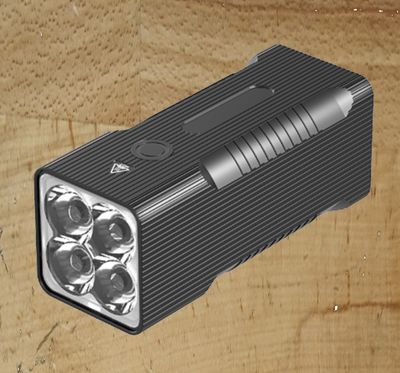
TurboTorch Casual 10000P/42Wh Headlight
TurboTorch Casual 10000P/42Wh Headlight
Budget fixture with self-contained, high endurance battery
AU$54.55
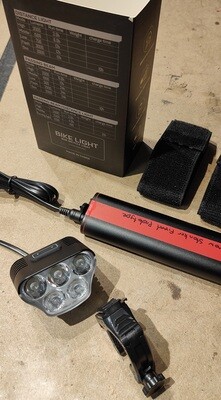
TurboTorch Enduro 5000/72Wh Headlight
TurboTorch Enduro 5000/72Wh Headlight
Budget fixture with high endurance external battery
AU$113.64
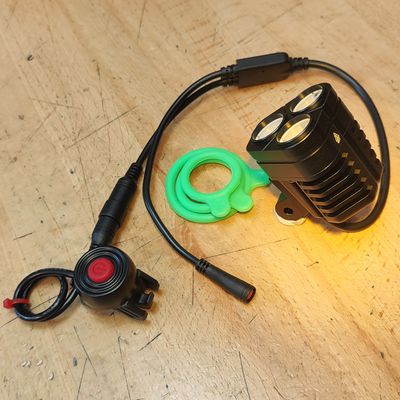
TurboTorch Cobra 3600/M8 Headlight
TurboTorch Cobra 3600/M8 Headlight
Premium fixture for NAMI scooter battery
AU$159.09
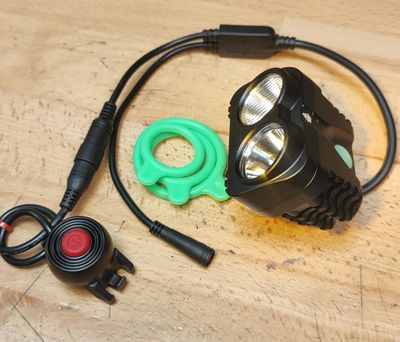
TurboTorch Bushmaster 5000/M8 Headlight
TurboTorch Bushmaster 5000/M8 Headlight
Premium fixture for NAMI scooter battery
AU$195.45
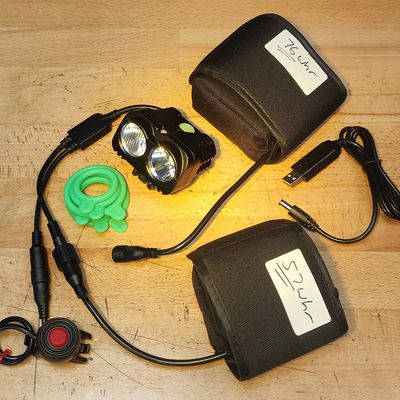
TurboTorch Bushmaster 5000/57|76Wh Headlight
TurboTorch Bushmaster 5000/57|76Wh Headlight
Premium fixture with external battery
AU$268.18
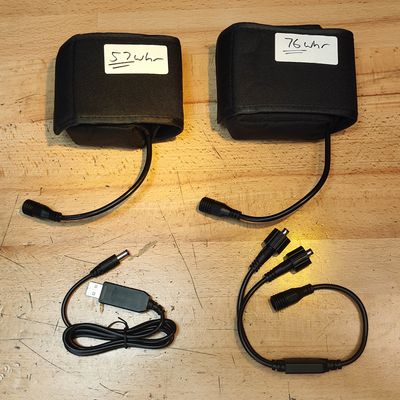
TurboTorch Cobra & Bushmaster Accessories
TurboTorch Cobra & Bushmaster Accessories
Additional batteries and mobile phone charger
AU$36.36
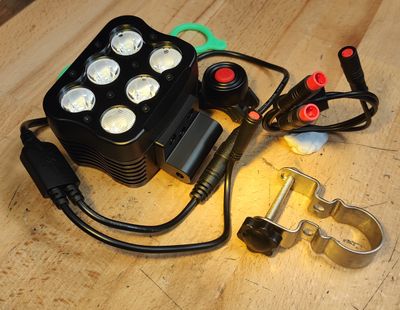
TurboTorch Bushmaster 8200/M8 Headlight
TurboTorch Bushmaster 8200/M8 Headlight
100 watts for NAMI scooter battery
AU$359.09
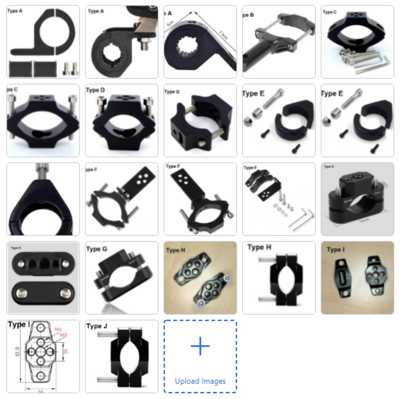
eScooter Accessory Mounting Bracket Series
eScooter Accessory Mounting Bracket Series
A selection of clamps and brackets from the workshop shelf.
AU$7.27
Display prices in:AUD
